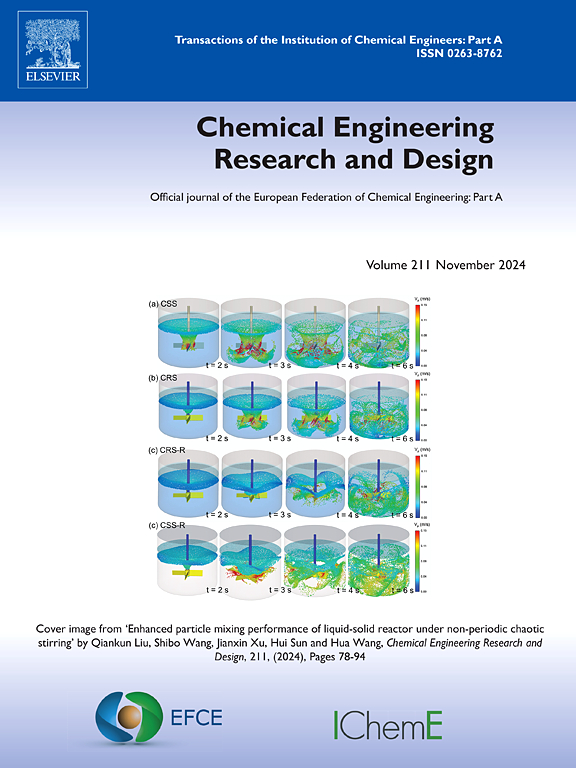Transient behavior of the DYNASWIRL® phase separator during cryogenics tank-to-tank transfer operations
IF 3.7
3区 工程技术
Q2 ENGINEERING, CHEMICAL
引用次数: 0
Abstract
In order to separate gas and liquid from a two-phase mixture in space or earth applications, one can generate a strong artificial acceleration field instead of relying on gravity. This can be achieved by generating a swirl flow in a separator. The DYNASWIRL® phase separator is such a passive device, which had been demonstrated in air/water mixtures in the laboratory and on five reduced gravity NASA parabolic flights. In this work, extensive laboratory testing and numerical simulations are conducted to demonstrate the validity of the DYNASWIRL for phase separation with cryogenics. Liquid nitrogen (LN2) is used for extensive testing involving unsteady tank-to-tank transfer with quenching of separator and piping, liquid boil-off and vaporization, phase separation and recovery. This paper describes the separator and testing setups used. It examines the effects of the liquid (water and LN2), geometric parameters, and their effects on the separation and on the pressure loss across the separator, and analyzes the flow dynamics of the gas removal process. Validated numerical simulations support the experimental results and help explain the effects of the design parameters on the results.
DYNASWIRL® 相分离器在低温储罐到储罐传输操作过程中的瞬态行为
在太空或地球应用中,为了从两相混合物中分离出气体和液体,可以产生一个强大的人工加速场,而不是依靠重力。这可以通过在分离器中产生漩涡流来实现。DYNASWIRL® 相分离器就是这样一种被动装置,它已在实验室的空气/水混合物中和美国宇航局的五次减重力抛物线飞行中得到验证。在这项工作中,进行了广泛的实验室测试和数值模拟,以证明 DYNASWIRL 用于低温相分离的有效性。液氮(LN2)被用于广泛的测试,包括分离器和管道淬火、液体沸腾和汽化、相分离和回收的非稳态槽到槽传输。本文介绍了所使用的分离器和测试装置。它研究了液体(水和 LN2)、几何参数及其对分离和分离器压力损失的影响,并分析了气体去除过程的流动动力学。经过验证的数值模拟支持实验结果,并有助于解释设计参数对结果的影响。
本文章由计算机程序翻译,如有差异,请以英文原文为准。
求助全文
约1分钟内获得全文
求助全文
来源期刊

Chemical Engineering Research & Design
工程技术-工程:化工
CiteScore
6.10
自引率
7.70%
发文量
623
审稿时长
42 days
期刊介绍:
ChERD aims to be the principal international journal for publication of high quality, original papers in chemical engineering.
Papers showing how research results can be used in chemical engineering design, and accounts of experimental or theoretical research work bringing new perspectives to established principles, highlighting unsolved problems or indicating directions for future research, are particularly welcome. Contributions that deal with new developments in plant or processes and that can be given quantitative expression are encouraged. The journal is especially interested in papers that extend the boundaries of traditional chemical engineering.
 求助内容:
求助内容: 应助结果提醒方式:
应助结果提醒方式:


